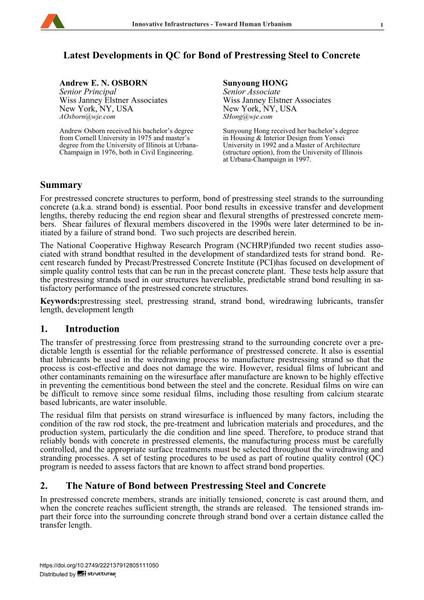Latest Developments in QC for Bond of Prestressing Steel to Concrete

|
|
|||||||||||
Détails bibliographiques
| Auteur(s): |
Andrew E. N. Osborn
Sunyoung Hong |
||||
|---|---|---|---|---|---|
| Médium: | papier de conférence | ||||
| Langue(s): | anglais | ||||
| Conférence: | 18th IABSE Congress: Innovative Infrastructures – Towards Human Urbanism, Seoul, Korea, 19-21 September 2012 | ||||
| Publié dans: | IABSE Congress Seoul 2012 | ||||
|
|||||
| Page(s): | 740-748 | ||||
| Nombre total de pages (du PDF): | 9 | ||||
| DOI: | 10.2749/222137912805111050 | ||||
| Abstrait: |
For prestressed concrete structures to perform, bond of prestressing steel strands to the surrounding concrete (a.k.a. strand bond) is essential. Poor bond results in excessive transfer and development lengths, thereby reducing the end region shear and flexural strengths of prestressed concrete mem- bers. Shear failures of flexural members discovered in the 1990s were later determined to be in- itiated by a failure of strand bond. Two such projects are described herein. The National Cooperative Highway Research Program (NCHRP)funded two recent studies asso- ciated with strand bondthat resulted in the development of standardized tests for strand bond. Re- cent research funded by Precast/Prestressed Concrete Institute (PCI)has focused on development of simple quality control tests that can be run in the precast concrete plant. These tests help assure that the prestressing strands used in our structures havereliable, predictable strand bond resulting in sa- tisfactory performance of the prestressed concrete structures. |
||||
